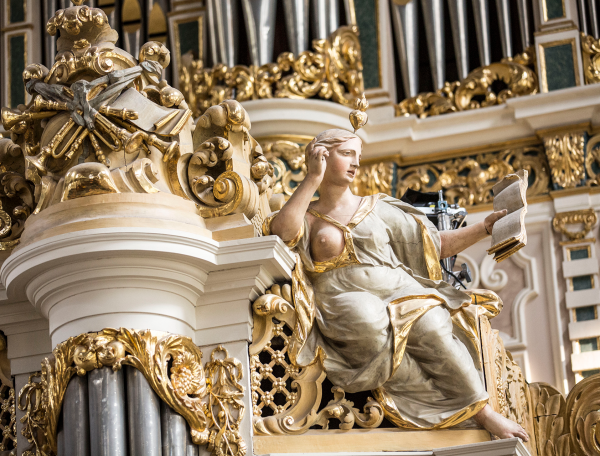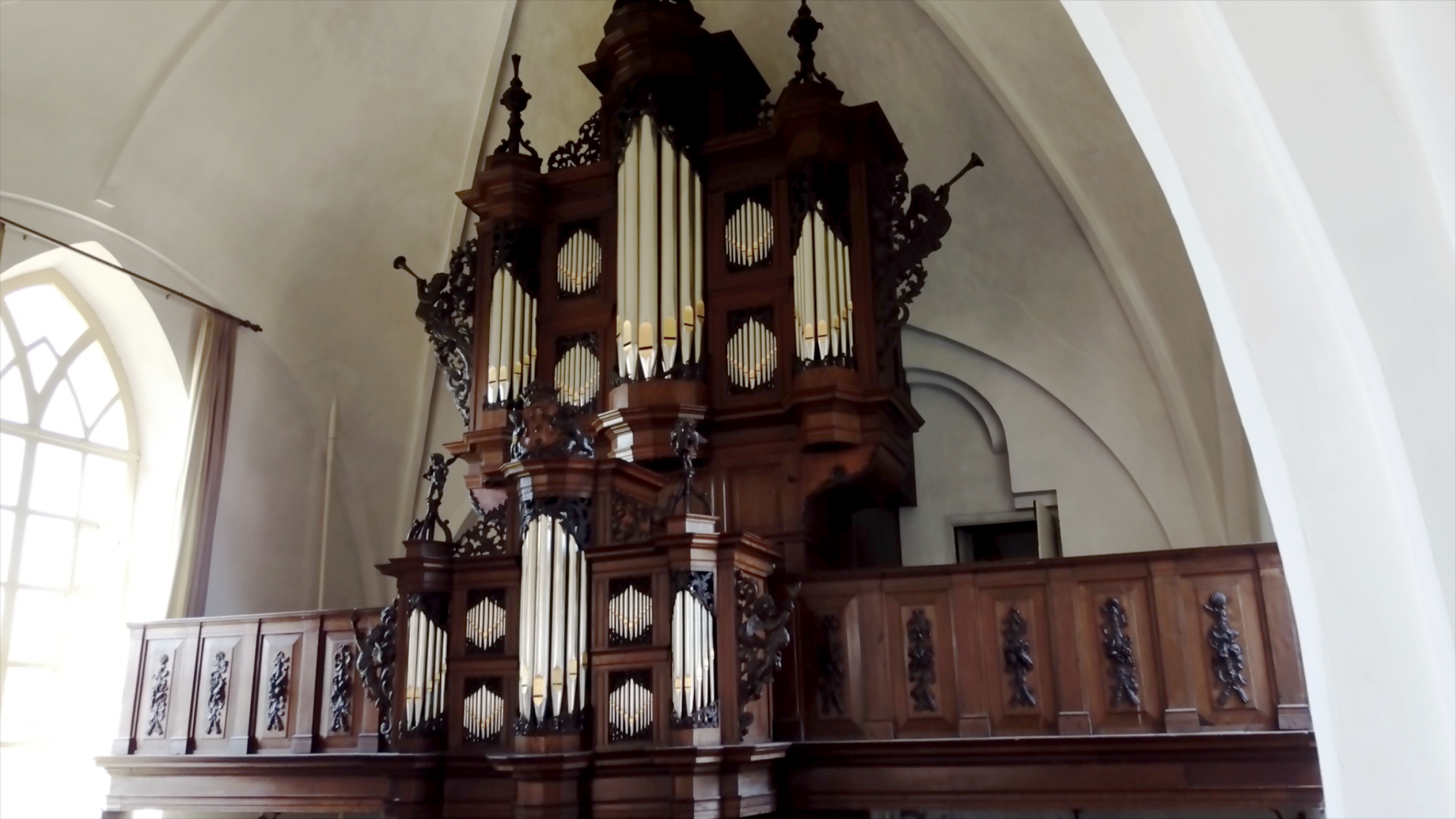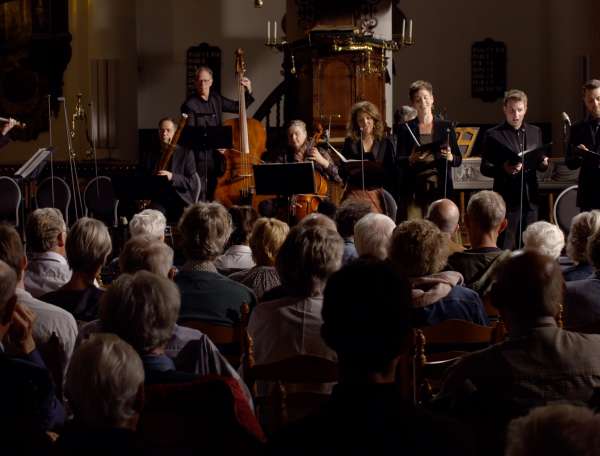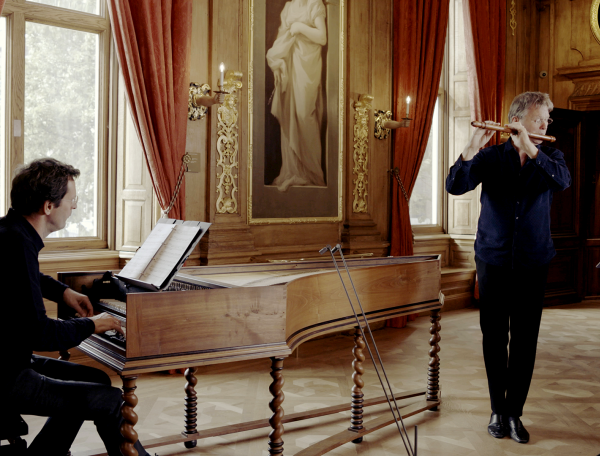

Sonata no. 6 in G major
BWV 530 performed by Reitze Smits
Jacobikerk, Uithuizen
Behind the music
Son defends father
These sonatas will survive all revolutions in musical taste
Who is more modern: Handel or Bach? This question was already being asked in the eighteenth century. Bach was often regarded as skilful but old-fashioned, and Handel as more progressive. However, this idea is contradicted in the first movement of this Sonata in G major. The monophonic opening by the two upper parts and the uncomplicated harmony are supremely modern. No wonder then that Bach’s six trio sonatas became a trump card in the discourse.
In 1788, an anonymous letter was published in a German journal. It was a response to a passage in Charles Burney’s account of the life of G.F. Handel, in which the Englishman wrote that in his organ music Handel had “surpassed even Johann Sebastian and the other Germans”. But the letter writer is not convinced of Handel’s modernity, characterising his keyboard variations as “unrefined and far too simplistic for our times”. Bach, however, was timeless and therefore far more modern. “Besides other trios for organ, there is a set of 6 such pieces for two manuals and pedal, which are so elegantly composed that they still sound good today and never age, and will survive all revolutions in musical taste”.
So the elegant trio sonatas for organ were already being used as evidence of the timeless quality of his music just a couple of decades after Bach’s death. It is not certain who wrote and submitted the letter, but it is likely that it was Carl Philipp Emanuel Bach who was defending his father. His remarks seem to suggest that things that are too modern age the quickest. This balance was sought by his father as well. In this sonata, the elegant first movement and the complex chromatic rhythms of the second movement are followed by an ending that combines elements of both. Modern – yet unmistakeably Bach.
Six sonatas, BWV 525-530
Around 1727-1730, Bach introduced a new organ genre: the trio sonata. This type of sonata –with two melodic instruments and bass, or a soloist and keyboard – had long been a fixture in Baroque chamber music, but the three parts had never been heard before on one instrument. Through clever registration, it is possible to attain a wealth of sounds on the organ, but this is merely the beginning, as the six sonatas are regarded as extremely difficult. Schweitzer, for instance, says that “those who have practiced these sonatas thoroughly will not actually encounter any more problems in either the old or the modern organ literature. [...] He has achieved absolute precision in his playing – the ultimate condition of the true art of organ-playing. In this complicated trio piece, even the smallest irregularity can be heard with terrifying clarity”.
Biographer Forkel remarked that Bach wrote the collection (or transcribed it from earlier material) for the studies of Wilhelm Friedemann, whom he “thus trained to be the great organist he later became”. Maybe this context is also the reason he adds galant touches to the Italian concerto style here and there, inspired by the operas in Dresden of which Friedemann was apparently a great fan. The sonatas remained influential for a long time, also on the young Mendelssohn, for example. Notwithstanding its chamber music origins, this is out-and-out keyboard music, with a unique interaction between both hands. The almost endless variation of form makes the collection a world of its own.
- BWV
- 530
- Title
- Sonata no. 6 in G major
- Instrument
- organ
- Genre
- organ works
- Serie
- Six sonatas (organ)
- Year
- 1727-32
- City
- Weimar/Leipzig
- Special notes
- Probably an arrangement of a lost trio sonata.
Vocal texts
Original
Translation
Credits
-
- Release date
- 29 April 2021
-
- Recording date
- 18 July 2019
-
- Location
- Jacobikerk, Uithuizen
-
- Organist
- Reitze Smits
-
- Organ
- Arp Schnitger, ca. 1700
-
- Director and editor
- Robin van Erven Dorens
-
- Music recording
- Guido Tichelman, Bastiaan Kuijt
-
- Music edit and mix
- Guido Tichelman
-
- Camera
- Onno van der Wal
-
- Lights
- Gregoor van de Kamp
-
- Data handling
- Stefan Ebels
-
- Interview
- Robin van Erven Dorens, Marloes Biermans
-
- Producer
- Jessie Verbrugh
Discover
Help us to complete All of Bach
There are still many recordings to be made before the whole of Bach’s oeuvre is online. And we can’t complete the task without the financial support of our patrons. Please help us to complete the musical heritage of Bach, by supporting us with a donation!

